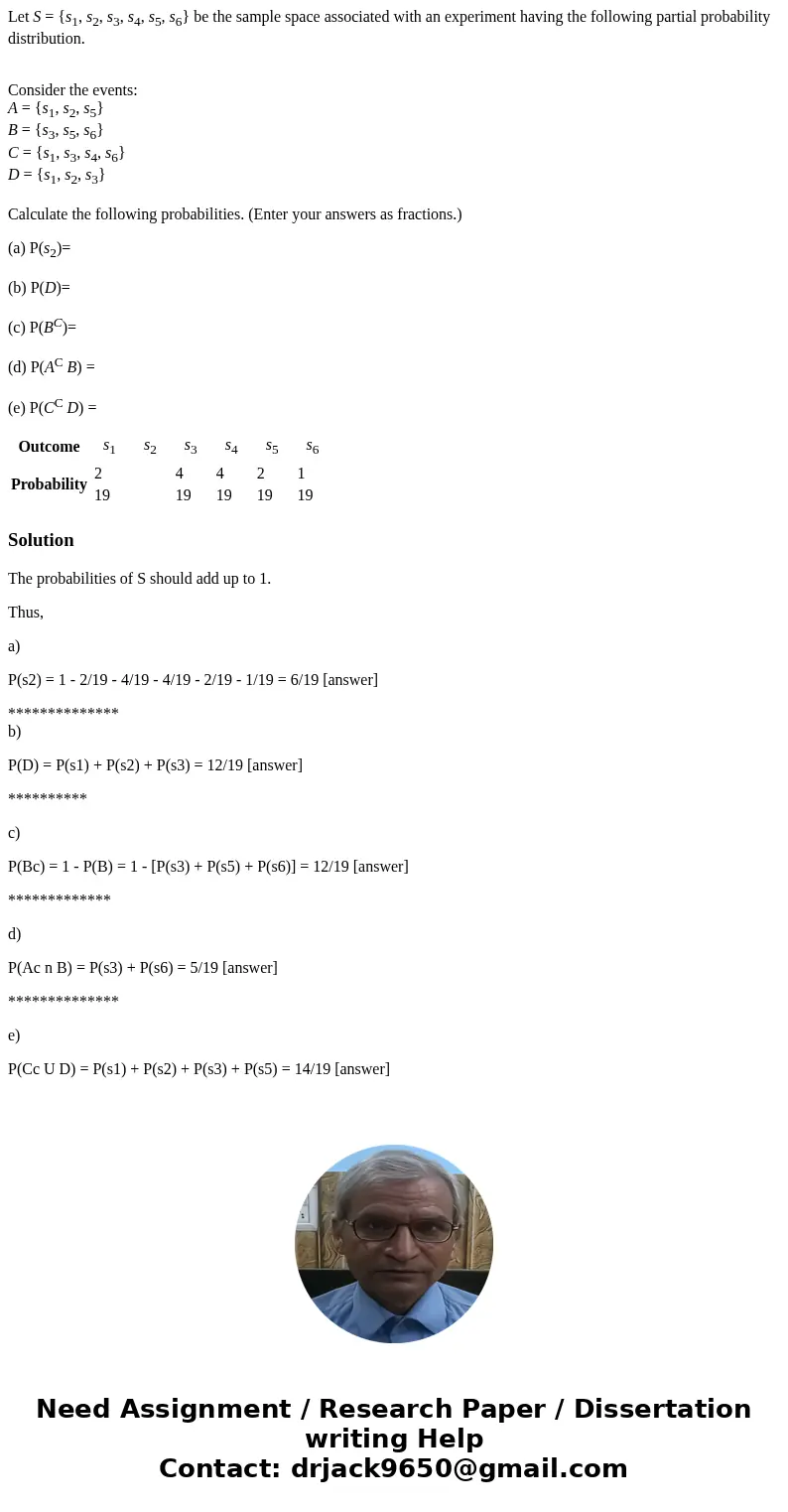Let S s1 s2 s3 s4 s5 s6 be the sample space associated with
Let S = {s1, s2, s3, s4, s5, s6} be the sample space associated with an experiment having the following partial probability distribution.
Consider the events:
A = {s1, s2, s5}
B = {s3, s5, s6}
C = {s1, s3, s4, s6}
D = {s1, s2, s3}
Calculate the following probabilities. (Enter your answers as fractions.)
(a) P(s2)=
(b) P(D)=
(c) P(BC)=
(d) P(AC B) =
(e) P(CC D) =
| Outcome | s1 | s2 | s3 | s4 | s5 | s6 | ||||||||||
|---|---|---|---|---|---|---|---|---|---|---|---|---|---|---|---|---|
| Probability |
|
|
|
|
|
Solution
The probabilities of S should add up to 1.
Thus,
a)
P(s2) = 1 - 2/19 - 4/19 - 4/19 - 2/19 - 1/19 = 6/19 [answer]
**************
b)
P(D) = P(s1) + P(s2) + P(s3) = 12/19 [answer]
**********
c)
P(Bc) = 1 - P(B) = 1 - [P(s3) + P(s5) + P(s6)] = 12/19 [answer]
*************
d)
P(Ac n B) = P(s3) + P(s6) = 5/19 [answer]
**************
e)
P(Cc U D) = P(s1) + P(s2) + P(s3) + P(s5) = 14/19 [answer]

 Homework Sourse
Homework Sourse